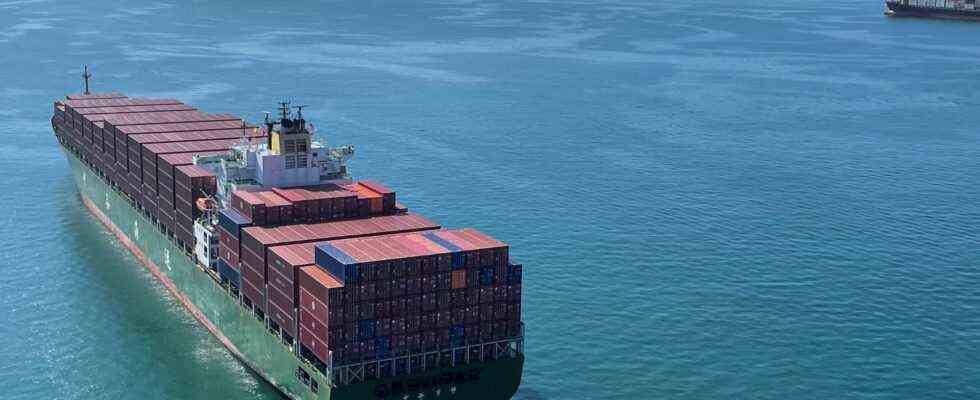Status: 03.11.2021 3:34 p.m.
International shipping aims to become climate neutral by 2050. This requires alternative fuels and political initiatives. What options does the industry have?
Ships handle 90 percent of the global trade in goods. This causes around one billion tons of CO2 annually, i.e. around 2.5 percent of global greenhouse gas emissions. If international shipping were a country, it would be sixth in the ranking of the largest CO2 emitters.
Shipping traffic crosses national borders and is not taken into account in the Paris Climate Agreement. That is why the UN Organization for Worldwide Shipping (IMO), in which 174 countries have a say, should actually set separate regulations – the negotiations in June on a CO2 price for shipping remained inconclusive, however.
Climate neutral by 2050
Now, however, the shipping companies have made a move: the world shipping association ICS has submitted a proposal to the IMO on the initiative of the German shipowners, the aim of which is to make the industry climate-neutral by 2050. “Climate protection can no longer be postponed, as the latest report by the International Climate Council (IPCC) confirms,” said President of the Association of German Shipowners (VDR), Alfred Hartmann. “We hope that all participants in the maritime transport chain, but also the states in particular, will provide us with comprehensive support in this great task.”
The goal is ambitious, as it would require fundamental changes in shipping to achieve it. The majority of ocean, coastal and inland vessels still use heavy fuel oil and diesel. “From a technical point of view, however, it is quite realistic that shipping will become climate-neutral by 2050,” explains Martin Cames, head of the Energy and Climate Protection department at the Öko-Institut in Berlin. In his opinion, however, a political coalition of the willing would be necessary for the actual implementation of the plans: “In the IMO, these plans will be difficult to implement because there are simply too many parties with different interests represented there.”
Electric motors for short distances
There are several possibilities for clean propulsion systems in shipping, but a dominant, clean propulsion system has not yet become established. That is why the EU’s climate plan – “Fit for 55” – does not commit itself to one technology for shipping, which means that research is currently taking place in many different directions, reports Martin Cames.
Electric motors, such as those used in cars, are not an option for container ships: the ocean liners cannot cover the distances they have to cover with battery power. “However, we have already seen that ferries, for example, which only travel a few hours and short distances, run on electric motors or hydrogen and are therefore climate-neutral,” says the Öko-Institut expert.
Maersk shipping company invests in “green” methanol
Container shipowners, on the other hand, are increasingly relying on alternative drives: “Basically, the problem is not the engine, but the fuel,” emphasized VDR President Hartmann. Possible fuels that come into focus are ammonia or methanol.
Only the methanol drive can currently be used, as the engines required for this are also available: “There are already ships that operate on the basis of methanol. However, this is still fossil methanol, which is mainly obtained from natural gas,” explains Cames. But there are first attempts to use methanol on the basis of renewable energies: The Danish shipping company Maersk has ordered eight large ships that are to run on “green” methanol, which is produced with renewable energies. The container ships should be ready for use from 2024.
Ammonia is also an alternative
With the alternative drive ammonia, a pungent smelling and poisonous gas, the biggest problem is currently the engines, explains the expert: “The engines, which are then to be operated with an ammonia fuel, are all still in the laboratory phase.” It will probably take a few years before the technologies can be used in practice. Incomplete combustion of ammonia can also produce laughing gas, a greenhouse gas that contributes 265 times as much to the greenhouse effect as carbon dioxide.
The advantages of ammonia, on the other hand, are the significantly lower costs and the fact that ammonia is already being produced in large quantities, as it is an important raw material for fertilizers.

